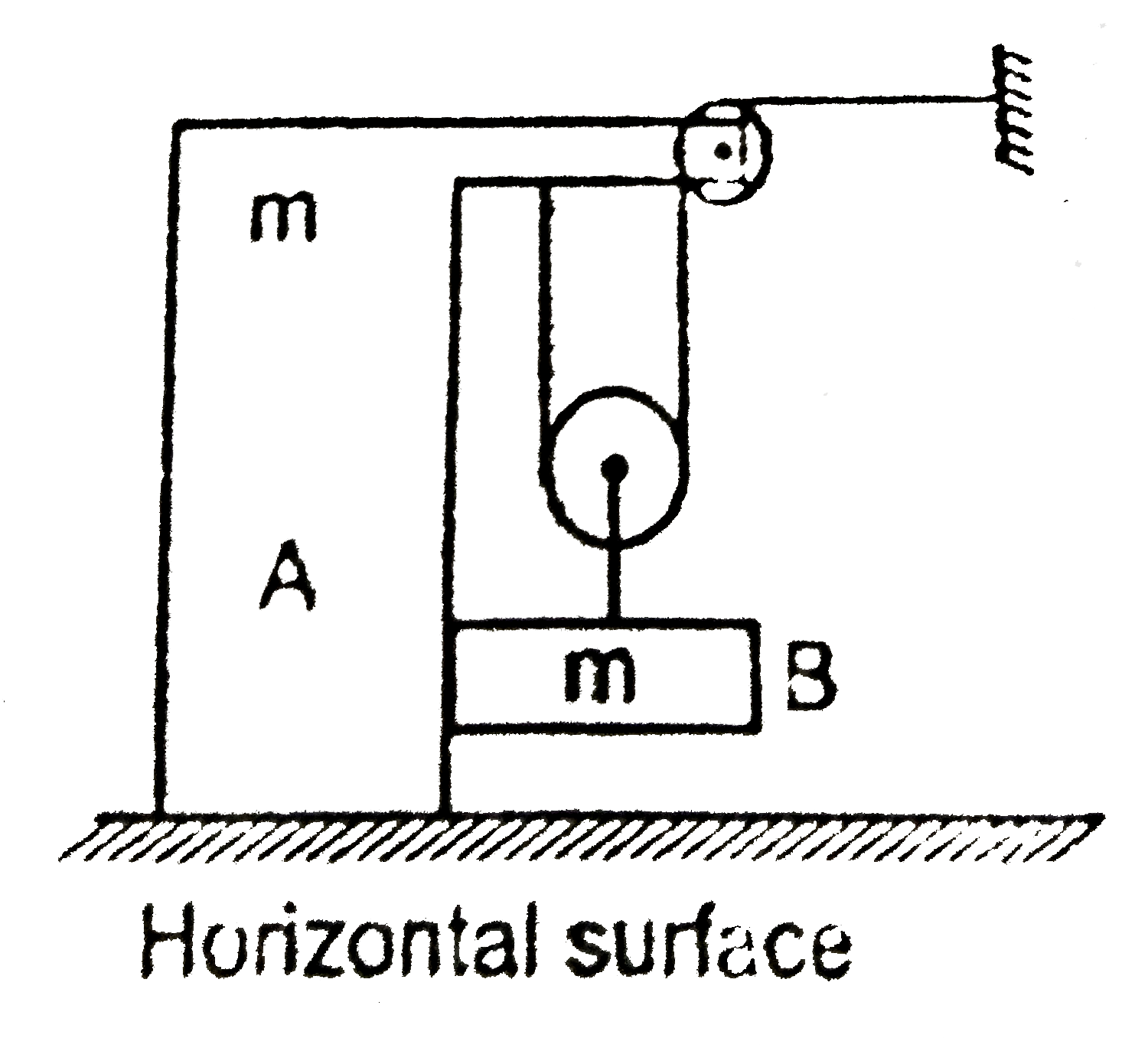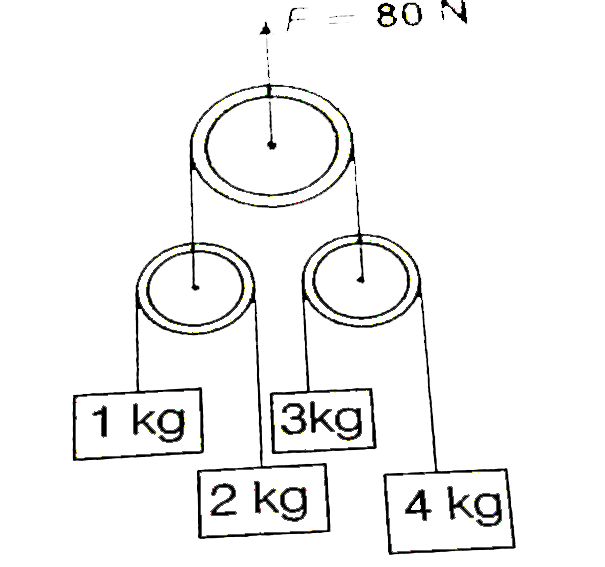In the diagram shown in figure, both pulleys and strings are massless. The acceleration of 2 kg block is

2.5m/s2(↑⏐)
5m/s2(↑⏐)
7.5m/s2(⏐↓)
10m/s2(↑⏐)
The correct Answer is:A
Step by step video & image solution for In the diagram shown in figure, both pulleys and strings are massless. The acceleration of 2 kg block is by Physics experts to help you in doubts & scoring excellent marks in Class 11 exams.
Updated on:21/07/2023Similar Questions
In the arrangement shown, the pulleys and strings are massless. The acceleration of block B is :

View SolutionFind the acceleration of blocks in fig. The pulley and the string are massless.

View Solution
In the shown mass pulley system, pulleys and string are massless. The one end of the string is pulleed by the force F=2mg. The acceleration of the block will be
View Solution
In the shown mass pulley system, pulleys and string are massless. The one end of the string is pulleed by the force F=2mg. The acceleration of the block will be
View SolutionIn the shown arrangement , both pulleys and the string are massless and all the surface are frictionless. Find the acceleration of the wedge.

View SolutionIn the arrangement shown the fixed pulley is massless and frictionless. If the acceleration of block of mass 1kg is 30xm/s2. Find the value of x.

View SolutionFigure shows an arrangement of pulleys and two blocks. All surfaces are frictionless . All pulleys and strings are massless. All string are smooth and massless.

The acceleration of block A is :
View SolutionIn the following arrangement, the system is initially at rest. The 5-kg block is now released. Assuming the pulley and string to be massless and smooth, the acceleration of block C will be

View SolutionIn the system shown all the surfaces are frictionless while pulley and string are massless. The mass of block A is 2m and that of block B is m. The acceleration of block B immediately after system is released from rest is

View SolutionIn the diagram shown in figure, all pulleys are smooth and massless and string are light. Match the following columns.

Column IColumn II(A) 1kg block(p) will remain stationary(B) 2 kg block(q) will move down(C) 3 kg block(r) will move up(D) 4 kg block(s)5ms−2(t)10ms−2
View Solution
